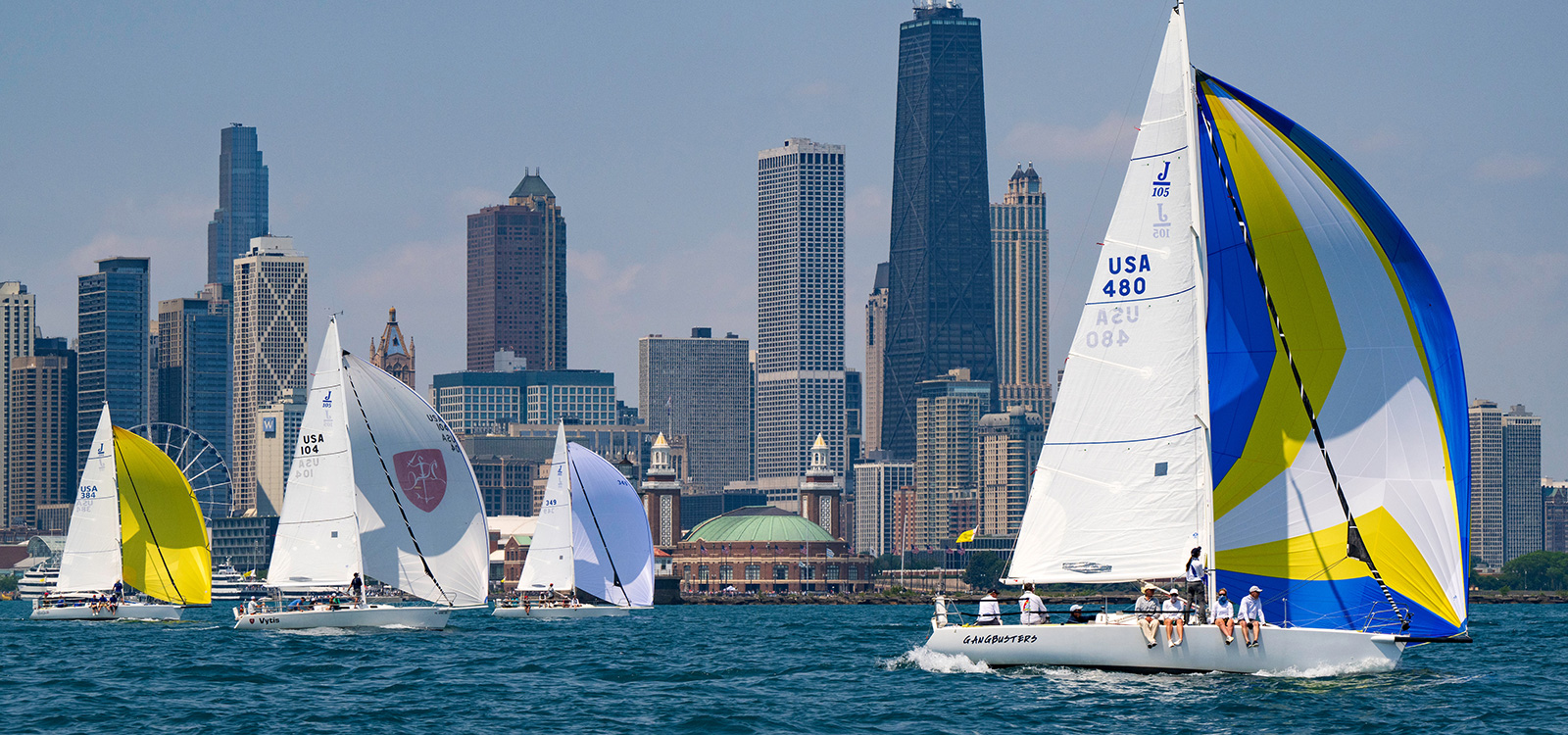
The Chicago Yacht Club (CYC) was founded in 1875, growing alongside the city’s recovery following the Great Fire of 1871. Both the club and its signature event, the Race to Mackinac, have become symbols of Chicago’s resilience and ambition.
The first edition of the ‘’Mac’’ was held in 1898, won by Vanenna, a 64-foot yacht owned by William Cameron, completing the course in 51 hours. The second race did not occur until 1904, but since then the event has run almost uninterrupted. Only from 1917 to 1920 was it paused, when many boat owners were away and their vessels were out of the water due to the First World War.
Though sailed on freshwater, the Mac is far from gentle. Lake Michigan presents sailors with unpredictable and often harsh conditions. In 2011, the race experienced its first fatal incident when Wing Nuts, a Kiwi 35, capsized during a violent storm. The 2022 edition was also marked by extreme weather, including thunderstorms, lightning, and wind gusts over 55 knots. Twenty-nine boats withdrew in what became one of the most chaotic and challenging editions in recent memory.
The course stretches 333 nautical miles, typically taking between 40 and 60 hours to complete. Starting in downtown Chicago, many boats raise their spinnakers soon after the start, carried by steady southerly winds. Crews must decide whether to sail up the western or eastern shore of Lake Michigan before converging near Manitou
Island and passing through Gray’s Reef Channel. The finish line is located at Mackinac Island in Lake Huron.
.jpeg)
The current monohull record is held by Maverick, an Andrews 80 skippered by Sanford Burris and the Kinney brothers, William and Ward. In 2024, the boat completed the course in 22 hours, 24 minutes and 23 seconds, breaking the previous record set by Roy P. Disney’s Pyewacket in 2002 by over an hour. The multihull record remains unbroken since 1998, when Steve Fossett’s Stars and Stripes, a 60-foot catamaran, finished in 18 hours, 50 minutes and 32 seconds.
This year’s 116th edition features several new elements, including the Skyline Sprint, a five mile inshore section along Chicago’s north lakefront, from Navy Pier to Montrose Harbor. Designed to be more spectator friendly, it allows the public to watch the start of the race against the backdrop of the city skyline.
The start is organised in two phases. Cruising boats set off on Friday 18 July between 3:00 and 4:00 p.m. CDT. Racing yachts follow on Saturday 19 July from 11:00 a.m. to 2:00 p.m. CDT. Nearly 300 boats are taking part, one of the largest fleets in recent years. The event welcomes over 2,500 sailors, including teenagers as young as 14, seasoned veterans aged 88, and more than 500 newcomers. The international profile of the race also continues to grow, with participants representing 14 countries and 49 americans states.
This year marks the return of the multihull division, with eleven high-speed catamarans and trimarans adding extra excitement. The demanding double-handed category, with just two sailors managing all onboard duties, features six entries.
Among the most ambitious efforts is the Ultra Mac challenge. Ten boats that recently completed the Bayview Mackinac Race, a 548 mile course from Port Huron to Mackinac Island, have returned to Chicago to take on a second crossing back to the island.
Maverick is once again the boat to watch. With its crew returning to defend their record, many are wondering whether they could break their own mark just one year later. Roxy is also a strong contender, following an impressive performance in last year’s edition and ready to challenge the frontrunners.
This edition also celebrates ten years of support from Wintrust. Tim Crane, president of the Chicago-based bank, said the company is proud to back traditions like the Race to Mackinac that help strengthen the community.
The race can be followed live through the official Race to Mackinac website, which offers real-time tracking and detailed information on every participating boat.